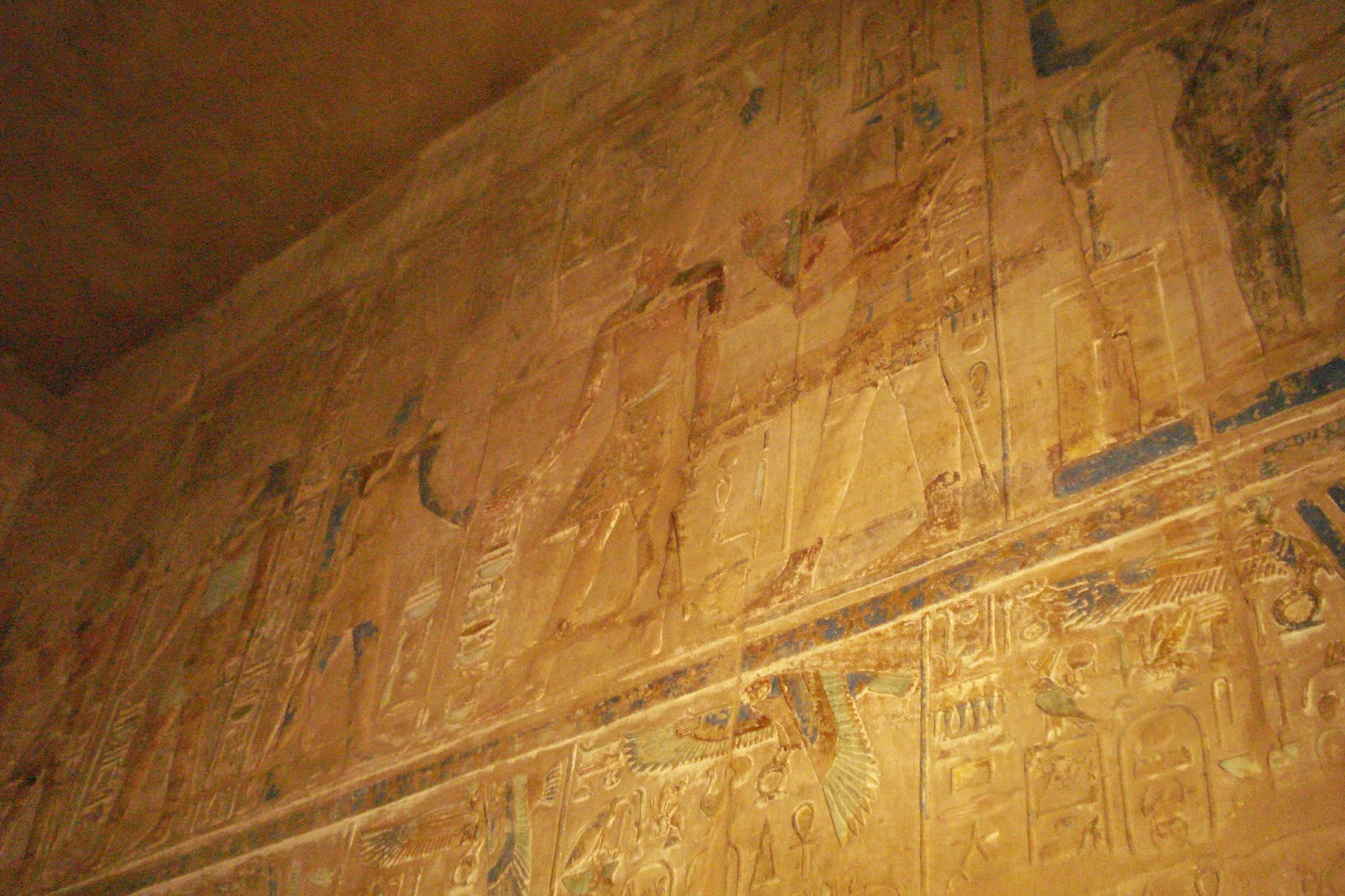Sphinx Avenue
The city of Luxor is a pleasant city beside the Nile River,
with a population of ½ million people. Right in the centre of Luxor (known as
THEBES in ancient times), there is a magnificent temple built by Amenophis III
(1417-1370 BC) and Rameses II (1104-1237 BC).
It is dedicated to the Theban Triad (Amun-Min, Mut and Khonsu). This is
one of the most historic temples of ancient Egypt. The Egyptians called their
temples ‘the houses of eternity’. Perhaps this is true, as they have so far
outlasted time. The long road leading to the temple is lined with small Sphinx statues. At the entrance gate, workers were preparing seats for an evening light show.
We entered through the gates past a giant Sphinx who greeted us with its enigmatic smile.
I was so excited when our Egyptologist, Hanan, led me into
one of the inner chambers and pointed out the hieroglyphics on the wall that
told of the arrival of Alexander the Great. Alexander visited there when he was
on his Persian campaigns, stopping by Egypt to drive out the Persians who had
invaded the country years before. The
Egyptians adored and honoured him, naming Alexander after Horus, the Son of
God. There on the wall, Hanan pointed
out, was Alexander’s cartouche! Below it
some Greek visitors from the 1800’s had engraved their own names. Alexander dedicated
one of the temple’s antechambers to the Sacred boat of Amun a replica of the
god’s solar boat used during religious celebrations.
Greek graffiti
During the Roman period (284-105 AD) the temple was used as
a military camp. There are still some restored paintings from that period at
one end of the main building. Later it
was used as a church by the Christians and after that the Mosque of Abdul
Haggag was built which stands alongside the temple wall.
Mosque of Abdul Haggag
North of Luxor’s city centre is Karnak, one of the largest
religious complexes. It was known as Ipet Isut which meant ‘the most select
of places’. Over the years it was enlarged by various Pharaoh’s. It covered an
area of 247 acres built around the Temple of Amun, and served as a spiritual
centre and economic hub composed of temples , obelisks, pylons, courts,
colonnades, halls, reliefs and sanctuaries.
As I approached it, down the long avenue of sphinx-like
animals, I could not help but feel a bit overwhelmed. The grandest feature of Karnak is the Great
Hypostyle Hall which has 135 columns and includes the chapel of Senusert dating
back to the Middle Kingdom.
(sorry will fix later)
I was amazed
at the massive height of the obelisks that tower over the buildings, one
dedicated to Thutmose I and Hatshepsut and one named ‘the botanical garden of Thumose
II’ which is decorated with reliefs of plants, tress and animals
After this exhilarating and somewhat exhausting day of
touring, we returned to the ship for dinner. We spent a relaxing evening in the
bar entertained by a a belly dancer and the most amazing whirling dervish who
could spin himself so fast he was a blur like a spinning top!
NEXT: Tomorrow we disembark the ship and begin a
cross-desert safari to the Red Sea.

























1 comment:
Nice Post.Thanks for sharing this inyour blog
Post a Comment